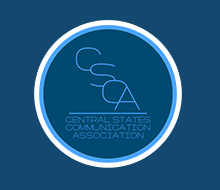Abstract
Tips offered center on classroom discourse, curriculum choices, and potential assignments. In this article, we present tips for creating a thriving undergraduate and graduate communication research lab. Based on our experiences developing and co-directing the Communication and Social Robotics Labs (CSRLs), we offer 10 best practices for acquiring resources and recognition, building a strong lab community, and attaining faculty and student goals for scholarship and beyond. Our overarching approach is framed by Dewey’s (1916) pragmatist educational metaphysic, which stresses student- and subject-centered learning, enlarging experiences, and the co-construction of meaning and knowledge. Although our labs are focused on human-machine communication (HMC), the strategies we present can be applied to any number of research contexts for both undergraduate and graduate education.
DOI
10.31446/JCP.2018.14
Author ORCID Identifier
Autumn Edwards 0000-0002-5963-197X
Chad Edwards 0000-0002-1053-6349
Patric R. Spence 0000-0002-1793-6871
Recommended Citation
Edwards, A., Edwards, C., & Spence, P. R. (2018). Life is a lab: Developing a communication research lab for undergraduate and graduate education. Journal of Communication Pedagogy, 1, 76-84. https://doi.org/10.31446/JCP.2018.14
Included in
Educational Assessment, Evaluation, and Research Commons, Educational Methods Commons, Educational Psychology Commons, Educational Technology Commons, Engineering Education Commons, Other Communication Commons, Other Education Commons, Other Engineering Commons

